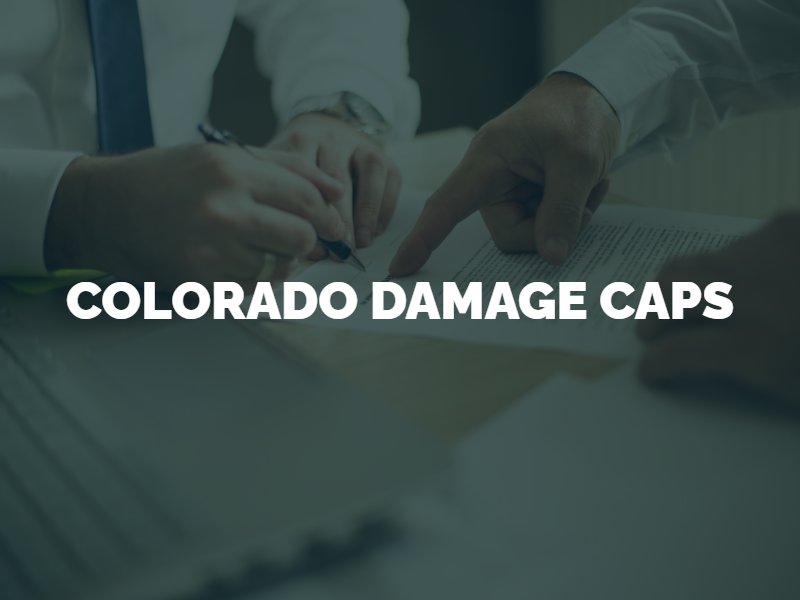A personal injury accident in Colorado could give you the right to pursue financial compensation from the person or party at fault. Damages is the legal term for this compensation. Some states, including Colorado, impose caps on damages. A damage cap gives a maximum amount a plaintiff can receive from a defendant. Understanding how a damage cap might affect your claim could give you a realistic depiction of its potential value.

Colorado has some of the most restrictive damages caps in the US. Under Colorado Revised Statute 13-21-102.5(3)(a), no plaintiff during any civil claim may recover more than the imposed damage cap. Limitations on damages exist in Colorado for all civil actions, with a few exceptions on a case-by-case basis. The damage cap on a claim will depend on the claim type.
Noneconomic damages, such as pain, suffering, emotional distress and loss of consortium, have a $250,000 damage cap (plus inflation) in Colorado. The courts may award up to $500,000, however, if the plaintiff can prove the need for greater compensation through clear and convincing evidence. The courts will eliminate the pain and suffering cap entirely for cases involving permanent physical impairment.
A punitive damage award punishes a defendant for his or her actions. It is an award a judge may give for a case involving gross negligence or malicious intent to cause injury. Colorado law states that a punitive damage award may not exceed the plaintiff’s actual damages unless the claim meets certain criteria. If it does meet the criteria, the cap increases to three times the amount of actual damages awarded.
In a wrongful death cause of action, a plaintiff may recover no more than $250,000 or $500,000 in pain and suffering damages (plus inflation). The cap increases to $300,000 for claims involving medical malpractice, however. The courts eliminate the cap on wrongful death claims that involve felonious killings.
The damage cap on a medical malpractice or medical negligence claim is $1,000,000 in total damages. Of the $1,000,000 awarded, no more than $300,000 may be for the plaintiff’s pain and suffering.
A dram shop claim is a damage claim against the vendor or establishment that served an obviously intoxicated individual alcohol. According to a Denver drunk driving accident lawyer, if a bartender overserved a patron who then caused a drunk driving accident, for example, the victim may have grounds for a dram shop liability claim. The damage cap is $150,000 in total recovery per person for a dram shop claim in Colorado.
Damage caps control how much a plaintiff can recover from a defendant. It helps prevent civil lawsuits from burdening the state’s economy. Calculating your maximum damage cap with inflation may take assistance from a Denver personal injury attorney. A lawyer can accurately and honestly evaluate your case and let you know what to expect in terms of applicable damage caps. A lawyer could also help you take actions that can maximize your financial recovery, such as gathering clear and convincing evidence of a defendant’s fault.
In addition to damage caps, Colorado’s modified comparative negligence law (Revised Statute 13-21-111) may also reduce your financial recovery as a plaintiff. This law allows the courts to reduce a plaintiff’s compensatory award by an amount equivalent to his or her percentage of fault for the accident and injuries in question. If you contributed to your accident, you may receive less compensation than you otherwise would have. Your assigned fault of 20%, for example, would reduce a $100,000 award by 20%, to $80,000. Hiring a personal injury attorney to represent you during insurance negotiations or an injury trial could help you minimize your comparative fault to maximize your financial recovery, up to the state’s applicable damage cap.